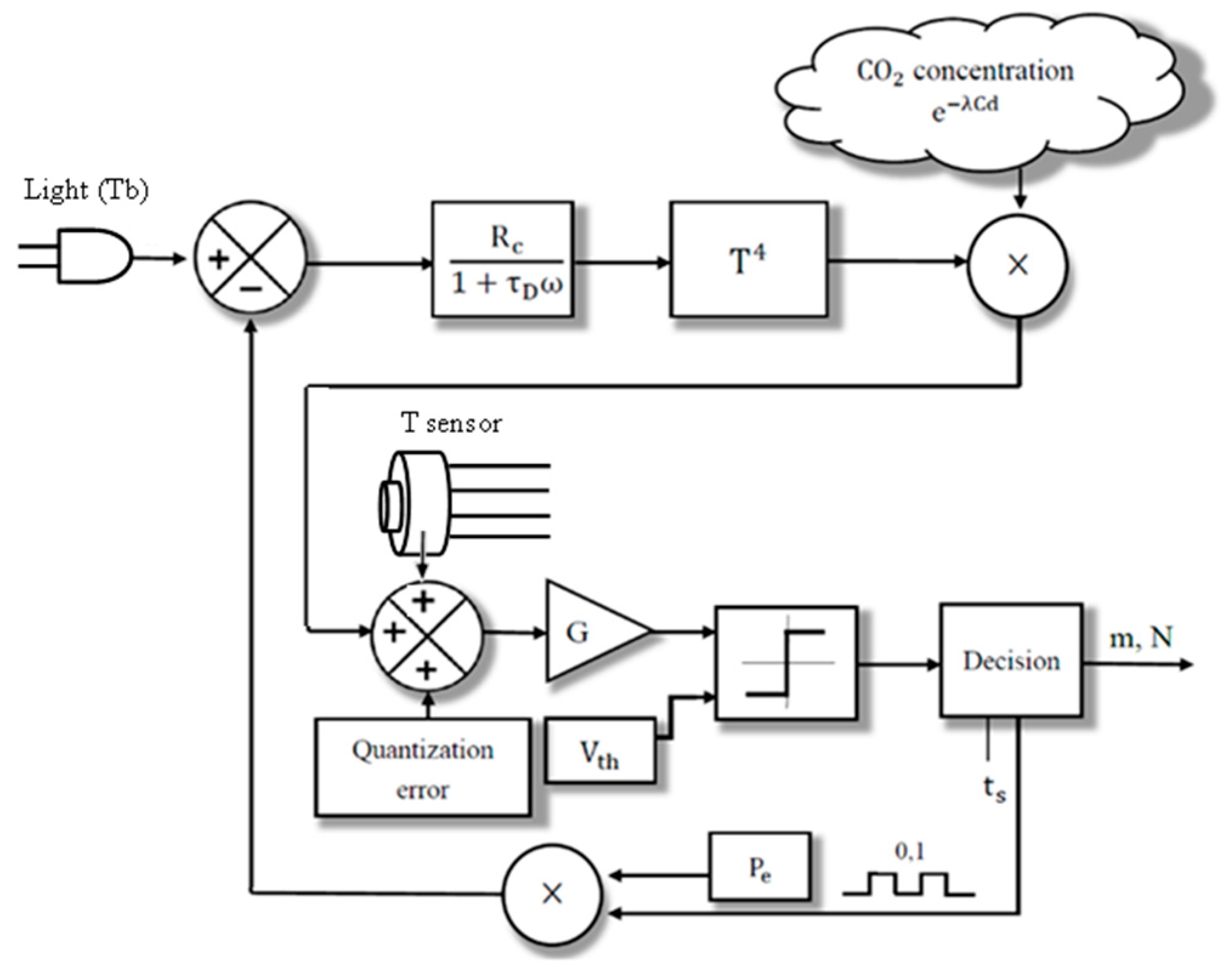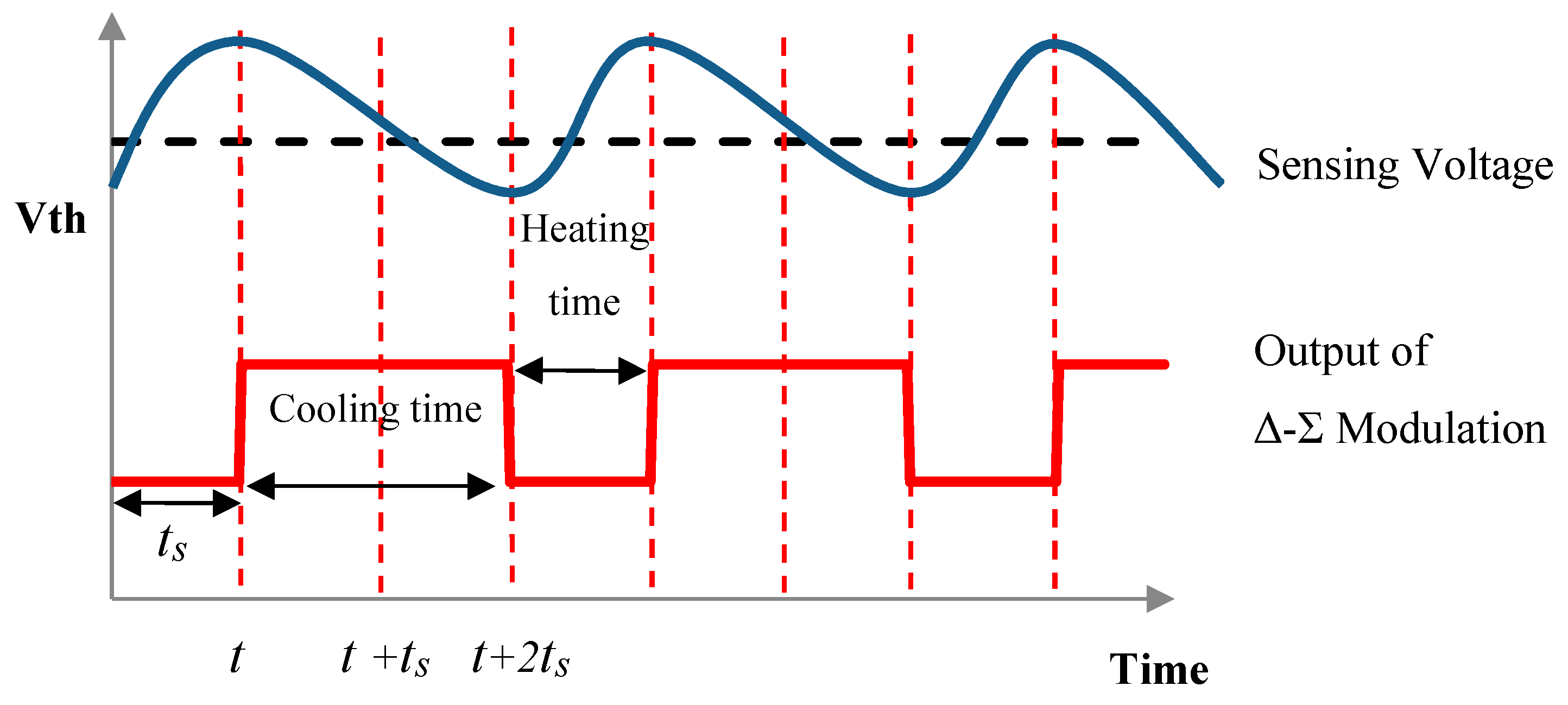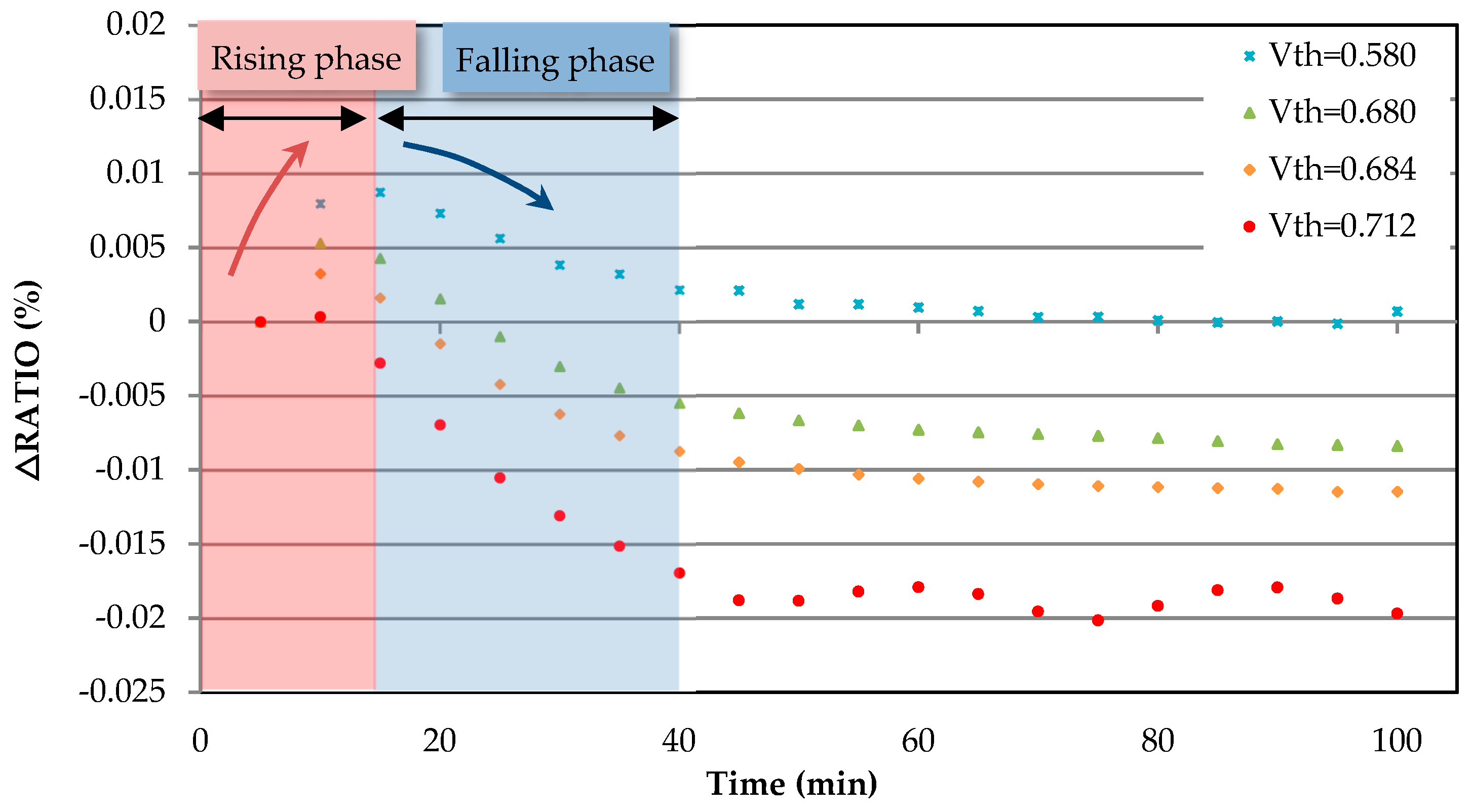Long Term Stable Δ-Σ NDIR Technique Based on Temperature Compensation
Abstract
:Featured Application
Abstract
1. Introduction
2. Theory and Implementation
2.1. Design of Proposed Δ-Σ Gas Sensing
2.2. Working Principle Based on Δ-Σ Modulation
2.3. NDIR Mathematical Model Based on Δ-Σ Modulation with Temperature Drift
2.3.1. Infrared Light Source
2.3.2. Sensor
2.4. Dynamic Temperature Compensation
3. Measurements and Results
3.1. Infrared Light Source
3.2. Sensor
4. Conclusions
Author Contributions
Funding
Acknowledgments
Conflicts of Interest
References
- Hyun, P.S.; Hyeop, Y.S.; Yeong, L.J.; Bae, P.H. The NDIR CO2 Sensor Implementation and Temperature Compensation. Proc. Atlantis Press ICMRA 2015. [Google Scholar] [CrossRef]
- Chen, S.; Yamaguchi, T.; Watanabe, K. A Simple, Low-Cost Non-Dispersive Infrared CO2 Monitor; Research Institute of Electronics, Shizuoka University: Shizuoka, Japan, 2002. [Google Scholar]
- Hammons, B.E.; Fritz, I.J.; Brennan, T.M.; Howard, A.J.; Olsen, J.A. Strain-relaxed inGaAs buffer layers grown by molecular-beam epitaxy for 1.3 μm Fabry-Perot optical modulators. J. Vac. Sci. Technol. Part B Am. Inst. Phys. 1993, 11, 932–934. [Google Scholar] [CrossRef]
- Yi, S.; Park, J.; Park, J. Temperature Compensation of Novel NDIR CO2 Gas Sensor. In Proceedings of the SENSORS, 2006 IEEE, Daegu, Korea, 22–25 October 2006; pp. 1373–1376. [Google Scholar]
- Yi, S. Temperature Compensation Methods of Nondispersive Infrared CO2 Gas Sensor with Dual Ellipsoidal Optical Waveguide. Sens. Mater. 2017, 29, 243–252. [Google Scholar] [CrossRef]
- Shen, C.; Li, S. Analysis of ultra-short pulse modulation for NDIR. In Proceedings of the 2017 International Conference on Circuits, Devices and Systems (ICCDS), Chengdu, China, 5–8 September 2017; pp. 184–188. [Google Scholar]
- Shen, S.Z.; Chen, C.F.; Shen, H.C. A New Pulse Delta-Sigma CO2 NDIR Gas Detector. Opt. Photonics J. 2016, 6, 219–225. [Google Scholar] [CrossRef]
- Puton, J.; Jasek, K.; Siodlowski, B.; Knap, A.; Wioeniewski, K. Optimisation of a pulsed IR source for NDIR gas analysers. Optoelectron. Rev. 2002, 10, 97–103. [Google Scholar]










| Vth (V) | 20–40 min ∆T sensor (°C) | 20–40 min ∆CO2 (before) | 20–40 min ∆CO2 (after) | Pre-Temperature Dependence (%) | Post-Temperature Dependence (%) |
|---|---|---|---|---|---|
| 0.580 | 0.5928 | 1.5 | 0.1 | 2.638% | 0.197% |
| 0.680 | 0.7273 | 4.5 | 0.1 | 2.647% | 0.066% |
| 0.684 | 0.7322 | 3.0 | 0.1 | 2.525% | 0.115% |
| 0.712 | 1.0231 | 4.5 | 0.2 | 2.547% | 0.083% |
© 2019 by the authors. Licensee MDPI, Basel, Switzerland. This article is an open access article distributed under the terms and conditions of the Creative Commons Attribution (CC BY) license (http://creativecommons.org/licenses/by/4.0/).
Share and Cite
Shen, C.-H.; Yeah, J.-H. Long Term Stable Δ-Σ NDIR Technique Based on Temperature Compensation. Appl. Sci. 2019, 9, 309. https://doi.org/10.3390/app9020309
Shen C-H, Yeah J-H. Long Term Stable Δ-Σ NDIR Technique Based on Temperature Compensation. Applied Sciences. 2019; 9(2):309. https://doi.org/10.3390/app9020309
Chicago/Turabian StyleShen, Chih-Hsiung, and Jun-Hong Yeah. 2019. "Long Term Stable Δ-Σ NDIR Technique Based on Temperature Compensation" Applied Sciences 9, no. 2: 309. https://doi.org/10.3390/app9020309




